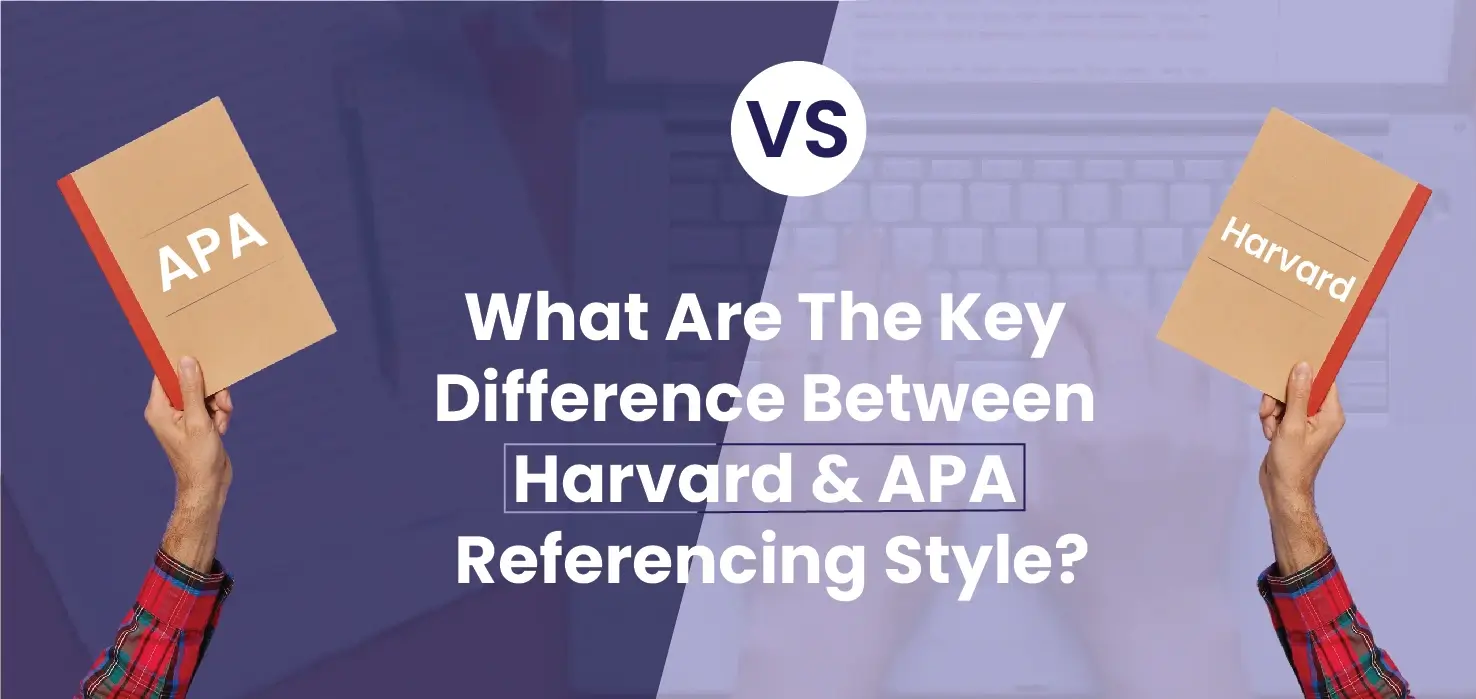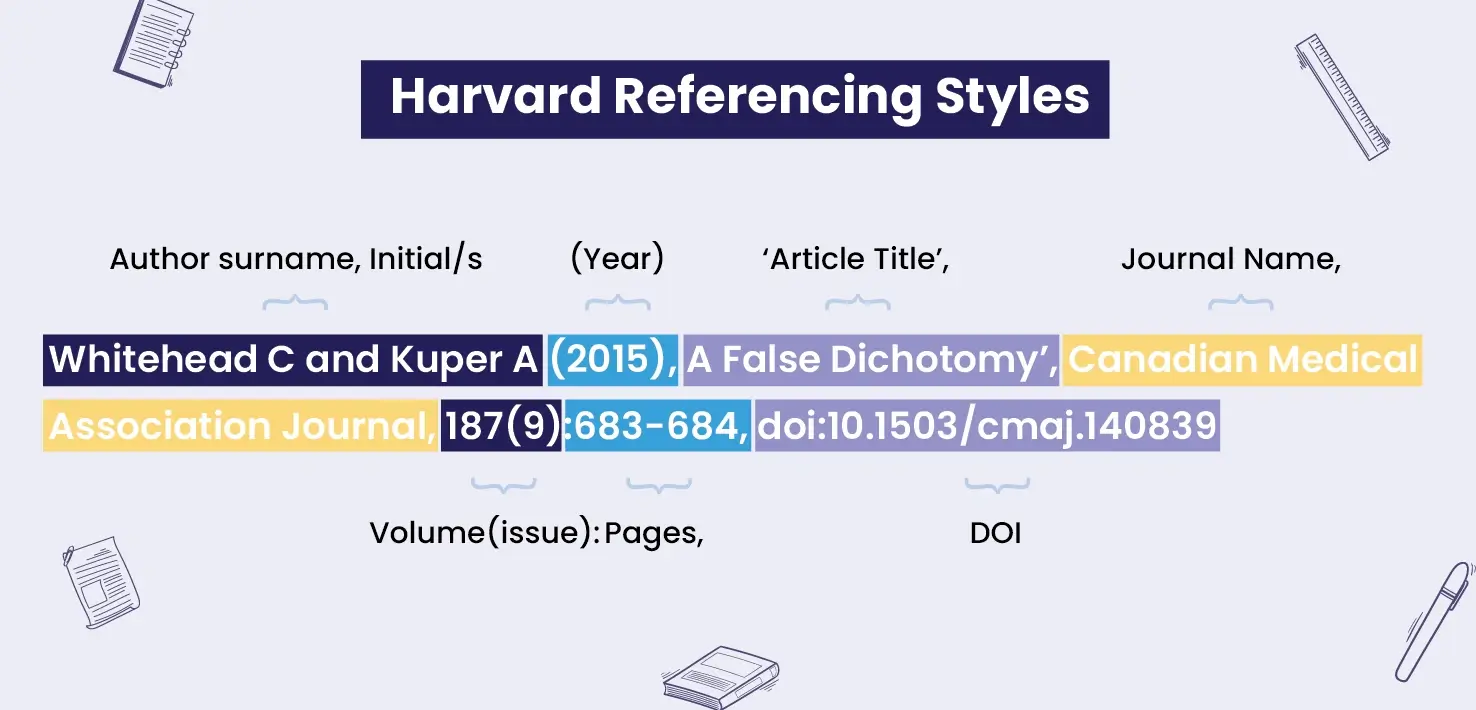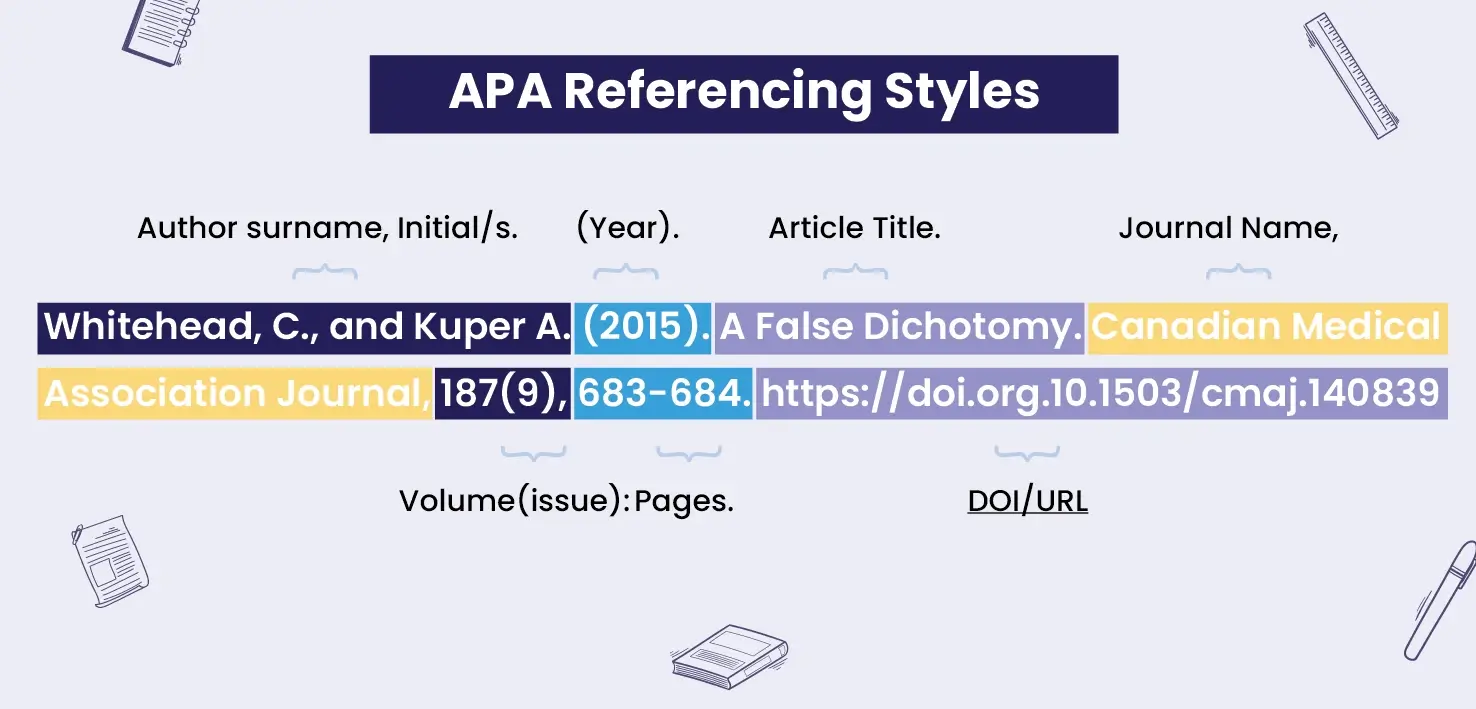
Harvard and APA referencing styles often find themselves tangled in a common misconception that they are the same and interchangeable. But while they might seem like close relatives from two different parts of the world, a range of differences sets them apart. While both may appear to follow the author-date format, they diverge themselves with punctuation and structures.
Keep reading if you are confused by the difference or curious about why these two citation styles are distinct. This blog post will explore key differences between Harvard and APA referencing, shedding light on why it is essential to understand the nuances even though they may appear similar.
As a student, you refer to many sources to gather relevant information and evidence for well-informed research. During this search, you may refer to someone else's ideas, phrases or concepts to build your own or back up your claims. Therefore, a citation is important for several reasons and here are some:-
Credits The Rightful Author: Ensures original authors receive recognition for their contributions.
Builds Credibility: This strengthens your arguments and demonstrates that your research is grounded in reliable sources.
Avoids Plagiarism: Proper referencing helps you give credit where it is due, keeping your paper honest and ethical.
Facilitates Further Research: Proper referencing allows other researchers to explore your sources for their research.
Your First Order
Get 20% OFF!
The APA referencing style was first adopted by the American Psychological Association in 1929 to standardise scientific writing for clarity. Since then, it has become the widely used referencing style worldwide. This style is commonly used in anthropology, education and social science.
Interestingly, the APA referencing style is derived from the Harvard referencing style, and therefore, they share many similarities. However, we are here to understand the differences between them so that you don't end up getting confused and blunder your academic paper. So, to rest the worries, let us explore Harvard vs APA through the table below:-
| Harvard | APA | |
|---|---|---|
| Known As | Author-Date System | Author-Date system |
| Edition | Remains the same. | Updated every 7 years. |
| Subject | Mainly used in Humanities, Nature and Social Sciences. | Used primarily by Social Sciences. |
| Reference List | Author's Surname, First Name Initial., Year Published. Title of the Source: Publisher. | Author's Last Name, First Name Initial. (Date Published). Title of the Source. Publisher |
| In-Text Format | (Last Name, Year of Publication) | (Last Name, Year, pg no.) |
| Used Where | It is primarily used by almost all universities in the UK and Australia. | It is used worldwide but primarily used by US universities. |
| Punctuations | Uses 'and' with no commas to separate author names. | Uses '&' preceded by commas to separate author names |
| Abbreviations | Uses 'p.' for in-text references and 'pp.' for reference lists. | Do not use 'p' or 'pp.' to quote certain pages in-text or reference lists. |
| Page Numbers | Page numbers are cited by "year", comma, page number within single braces. | Page numbers are cited by "year" and page number within single braces. |
Are you waiting to see some Harvard and APA referencing formats? Well, if that's what you are looking for, read below:-
A. Harvard Referencing Format
Reference List
| Format | Examples | |
|---|---|---|
| 1 Author | Author Surname, Initial (Year of Publication), Title, Subtitle, Edition: Publisher. | Smith, J. (2020) Data Science 101. 2nd ed. London: Tech Publishers |
| 2 or more Authors | (Author last name and Author last name Year) (Year of Publication), Title, Subtitle, Edition: Publisher. | Jones, M. and Taylor, R. (2017) Introduction to Statistics. 3rd ed. New York: Penguin Random House |

In-Text Citations
| Format | Examples | |
|---|---|---|
| 1 Author | (Last Name of The Author, Year of Publication) | (Smith, 2020) |
| 1 Author With Page Number | (Last Name of The Author, Year of Publication, pg no) | (Smith, 2020, p.28) |
| 2 or more Authors | (Last name of 2-3 authors, Publication Year) | (Jones and Taylor, 2020) |
B. APA Referencing Format
Reference List
| Format | Examples | |
|---|---|---|
| 1 Author | Author's Last Name, Initial. (Year). Title. Publisher. | Will, L. (1990). Everything about Accounting (2nd ed.). Macmillan. |
| 2 or more Authors | First Author's Last Name, Initial., & Second Author's Last Name, Initial. (Year). Title. (Editions). Publisher | Jones, M., & Taylor, R. (2014). Understanding Human Psychology (1st ed.). New Age Publishers |

In-Text Citations
| Format | Examples | |
|---|---|---|
| 1 Author | (Author's Last Name, Year) | (Smith, 1990) |
| 1 Author With Page Number | (Author's Last Name, Year, p. no) | (Wilson 1990, p. 45) |
| 2 or more Authors | (First Author's Last Name et al., Year) | (Brown et al., 2019) |
So, these were the APA and Harvard referencing formats with examples.
Incorrect Formatting: You often struggle with the correct order and punctuation (e.g., commas, capitalisation and semicolons). Instead, to avoid this common pitfall, use referencing tools or guides for formatting accuracy and cross-check your references before submission.
Multiple Authors: Sometimes, you fail to correctly cite sources that have multiple authors, as it is overwhelming. Harvard referencing style usually allows you to list up to four authors; the rest can be listed as "et al.". Therefore, take the first three to four authors and end it with et al.
No Date Or Author Sources: Sometimes, you use a reliable source with no author name or date mentioned. This confuses you and sends you into a spiral. For such cases, Harvard has a clear structure (Title, n.d). The "n.d." denotes no date is available.
Direct Quotes With Page Numbers: Some of you often forget to mention page numbers while stating a direct quote. It is important to do so so that the reader can refer to the page number from which you picked the quote.
Digital Object Identifier (DOI) Usage: Sometimes, you may omit DOIs or use outdated information or sources. For this, always bookmark the DOI so you don't forget to include it.
Order In Reference List: You often debate whether to cite your sources alphabetically or year-wise in the reference list. For all referencing styles, the correct order is to cite them alphabetically with hanging indents.
The best solution for all your APA challenges is to refer to the APA manual or handbook.
Citing references for a big research project or dissertation can be overwhelming, especially when dealing with hundreds of sources. How can you keep tabs on them all?! It's easy to lose track of referencing rules or formats, and making mistakes under pressure is inevitable. That's where we step in! Our experts make the referencing process easier and smoother so that you can focus on the most crucial aspect of your research and writing.
Experts: We boast a team of highly experienced native writers well-versed in UK academic standards.
All Referencing Styles Formats: We specialise in all referencing styles, including Harvard and APA.
Quick Turnaround: You may keep citations for the last minute, and that's alright because we offer quick but reliable last-minute referencing assistance.
While Harvard and APA referencing styles may share few similarities, their differences are more than cosmetic. Understanding these distinctions is important, as even a small punctuation error can affect the credibility of your paper. Both referencing styles share the common ground in ensuring clarity and consistency of sources, even though they have quirks. So, next time you work with either Harvard or APA, you'll know exactly what to do, and soon enough, referencing will seem second nature!
© Copyright Quick Assignment Hub All rights reserved.